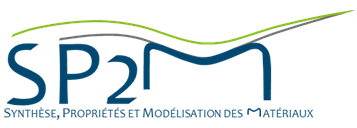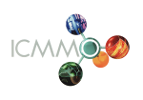
La photosensibilité à la lumière laser femtoseconde des verres à base de silice: changements structuraux
avec la collaboration de : Jing Tian (doctorante CSC), Yitao Wang (doctorant MESR), François Brisset et Sandra Mazerat (Plateforme ICMMO), Enric Garcia-Caurel et Razvigor Ossikovski (LPICM/Ecole Polytechnique).
L’apparition des sources lasers à impulsion ultra courte a ouvert depuis quelques années des perspectives très importantes dans la structuration des matériaux. Du fait de l’interaction ultra courte de forte puissance, l’énergie est déposée très localement et les dommages autour du point d’impact sont faibles. Cette particularité en fait un outil avantageux pour la modification à haute densité des matériaux. Par ailleurs, l’énergie pic très intense de l’impulsion conduit à des absorptions multiphotoniques qui dépendent moins de la composition du matériau qu'avec d'autres lasers. L’utilisateur possède alors un outil moins spécifique tout en étant plus flexible, par ailleurs. Enfin, du fait de l’interaction non-linéaire, la limite classique de diffraction peut être dépassée et des modifications structurales de taille submicronique sont possibles avec un laser dans le visible.
Le projet ci-dessous décrit notre activité vers une maîtrise du tenseur d'indice de réfraction en 3D. Elle fait intervenir un réseau de partenaires de différentes spécialités (optique non-linéaire, physique des plasma, physique des solides, mécanique et applications) .

Coordinator
The FLAG project coordination is provided by the group MAP/SP2M/ICMMO/UPSud.
B. Poumellec DR CNRS and Matthieu Lancry MCF
Partners
LPPM/ISMO/UPS (also RTRA and PRES partner), B. Bourguignon DR CNRS : http://www.ismo.u-psud.fr/spip.php?rubrique30
LISV/UVSQ (also PRES partner), E. Hervé Pr: http://www.lisv.uvsq.fr/
Thales Research and Technology, B. Loiseau Dr : http://www.thalesgroup.com/
CPMOH/UB1, E. Freysz et L. Canioni : http://www.cpmoh.cnrs.fr/SLAM/
Associated
3S Photonics : www.3Sphotonics.com
Context
The project is to master femtosecond laser – glass interaction in the view to achieve applications from a newly appearing technology i.e. 3D direct shaping of optical properties in silica-based glasses by means of femtosecond laser. The interaction of this kind of laser with silica-based glasses is such that laser-induced refractive index change can be as large as 10E-2 (the most achievable at this date by any available method) in any glasses, the linear birefringence can be as large as 80% (a unique feature), the attenuation can be as low as a dB/cm (can be improved) but the writing speed can be as large as 1 cm/s! And, on top of that, this is made locally in 3D due to high non-linear interaction. These features lead to think to tremendous progress in photonics with such a flexible tool. Especially, we think that we will be able to show the possibility for achieving adapted optical small components to transform any beam characterized by a set of parameters in its section like I![]() where
where ![]() corresponds to a point in the beam cross section,
corresponds to a point in the beam cross section, ![]() is the wave vector at this point,
is the wave vector at this point, ![]() is the polarisation vector and I is the intensity, into any other one having different set of parameters.
is the polarisation vector and I is the intensity, into any other one having different set of parameters.
The scientific and technical objectives of this project, for the years ahead, are as follows:
Characterize: Characterization of photo-induced structural changes and related properties. At this step, the material structure will be analyzed from the micrometer scale, down to nanometer scale and its optical properties. At the end of this stage, the boundaries of relevant parameters of the beam (polarization, repetition rate, pulse duration, beam concentration, asymmetric spectral beam) will be determined.
Rationalize: understanding the interaction mechanisms between the femtosecond laser and silica-based glasses sufficiently in order to reach a rational on the limitation of a given effect against the laser parameters and other problem parameters. For instance, for birefringence property, we will have to make links between structure change and strain-stress field induced in the glass. Then, to make links between structure changes and plasma and finally between plasma structures and light beam parameters.
Innovations: prototypes of 3D integrated optical devices such as optics (retardation plates, Fresnel lens, axicons), 3D waveguides and Volume Bragg grating will be fabricated and characterized in collaboration with industry such as Thales RT, Thales Laser but also SMEs as 3S Photonics in the field of optical telecommunications. On the other hand, we will also study the factors affecting the scattering, and propagation losses in micro-structured materials to unlock the industrial potential of this writing technique. We will seek to fill in patents whenever necessary.

